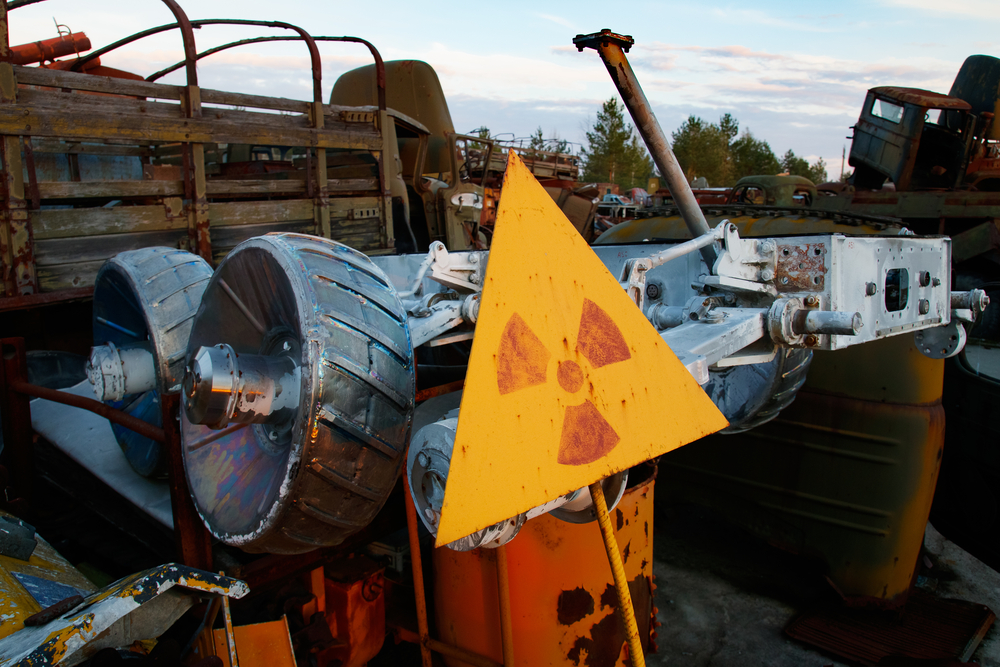Science & Tech
It Turns Out the Chernobyl Nuclear Catastrophe Was Sparked by a Nuclear Explosion, Not Steam

A nuclear explosion — not just one of innocuous steam — decimated the Chernobyl 4 nuclear reactor on April 25, 1986, sickening 237 with acute radiation poisoning, killing 31 of them, and, ultimately, bagging the inglorious distinction as history’s most ruinous nuclear disaster.
Scientists and researchers have, for decades, examined the Chernobyl nuclear catastrophe under the accepted and going hypothesis an explosion of steam destroyed the power station’s Number 4 reactor.
In fact, as Cosmos points out, it has been that exact determination about the cataclysmic accident at Chernobyl serving as the ultimate nuclear industry safety talking point — of the major disasters, officials assert, none has ever involved a nuclear explosion.
Or, have they?
Researchers from the Swedish Defence Research Agency, Swedish Meteorological and Hydrological Institute, and Stockholm University now contend in the journal, Nuclear Technology, that, while the second of two explosions eyewitnesses described was indeed steam, the first — (which in actuality was composed of many rapid, smaller blasts) — was nuclear, and convulsed debris into the farthest reaches of the sky.
According to their analysis, the researchers — led by Lars-Erik De Geer, a nuclear physicist with Swedish Defence Research Agency — say that, nearly three seconds after the first rapid series of explosions, a single one composed of steam breached the reactor, speeding nuclear debris further afield from the site, but closer into the atmosphere.
Measurements of xenon isotopes were taken by scientists with the V.G. Khlopin Radium Institute in Leningrad, four days after the accident, nearly 230 miles (370 kilometers) north of Moscow, in the city of Cherepovets, as well as more than 620 miles (1,000 kilometers) north-northeast of Chernobyl — substantially farther than detection of it had been predicted to be found.
Cosmos explains,
“Re-analysis of these isotopes reveals them to be the products of nuclear fission, implying they could have been created in a nuclear explosion. Xenon isotopes detected within the main Chernobyl detritus track over Scandinavia are slightly different and conform to material simply propelled from the reactor core by a non-nuclear blast.
“Looking back at weather patterns in the days after the explosion, De Geer’s team concluded that the Cherepovets isotopes could only have reached the city if they had been sent significantly higher into the air than the bulk of the Chernobyl outpour.”
Additionally, though no less significant, researchers took into consideration conclusions of investigators at the time, which noted the first explosion as having produced temperatures high enough to melt through a plate nearly six-and-a-half feet thick (two meters) in place beneath the core — destruction the new analysis deems only possible with a nuclear blast.
“We believe that thermal neutron mediated nuclear explosions at the bottom of a number of fuel channels in the reactor caused a jet of debris to shoot upwards through the refuelling tubes,” De Geer explained.
“The steam explosion which ruptured the reactor vessel occurred some 2.7 seconds later.”
In an interview with FOX News, De Geer added the nuclear explosion occurred in a “High Power Channel-Type Reactor,” or Reaktor Bolshoy Moshchnosti Kanalnyy (RBMK) — built during the time of the Soviet Union — the only sort of reactor capable of sparking a disaster like Chernobyl, of which eleven currently operate in Russia, according to statistics from the World Nuclear Association cited by the outlet.
“Our new theory deepens the understanding of the severe effects that can be the result of some original design faults in such reactors,” he continued. “Much has been corrected in remaining RBMK reactors, but a better understanding of what really happened in 1986 must of course be of great value for overseeing and possibly improving the design also in the future.”
Where industry proponents, insiders, and select experts tout the benefits of revising safety standards, revamping infrastructure, re-training workforces, and other efforts to improve nuclear power and modernize for the new millennium make it a viable green option, critics harpoon catastrophes like Fukushima and Chernobyl — perhaps more so now, given new information — as so broadly detrimental as to be unquantifiable.
To wit, Chernobyl-irradiated wild boar were reported by hunters in Sweden last month, and reindeer one-thousand miles away in Norway remain inedible — despite being traditional food in the region — due to dangerous levels of radiation their bodies contain from consuming contaminated lichens.
As Anti-Media grimly reported in April 2016,
“Lichens and mushrooms so thoroughly absorbed this radioactivity, in particular radioactive cesium, that reindeer over 1,000 miles away in Norway — where the meat is eaten — remain unfit for human consumption. Wormwood Forest, near the accident site, stands as an eerie monument of contamination with dead trees turned ginger-colored. Mass evacuations of humans from the areas surrounding Chernobyl naturally led to an explosion in wildlife numbers in species such as boars and wolves. And, as scientists discovered in 2011, birds displayed 5 percent smaller brains than average due to radioactivity lingering in the atmosphere.”
Groundbreaking in explaining the persistence of the Chernobyl disaster’s contamination and its heavy toll, alike, the new research, however, may take some time to gain acceptance in a scientific community in essence decades resolved to the conclusion no nuclear explosion occurred that fateful day — if acceptance of this paradigm-decimating analysis comes at all.
Image: Chernobyl, Shutterstock
Typos, corrections and/or news tips? Email us at Contact@TheMindUnleashed.com
